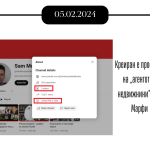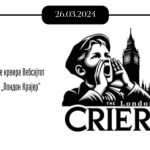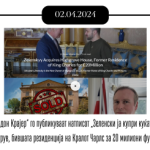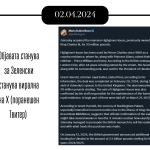A new study by an international team of fact-checkers, led by Maldita.es, traced the path of Russian disinformation about Zelensky, his family, and those in his inner circle. The disinformation traveled from fake news portals and small YouTube channels, through X profiles (formerly Twitter), to RT and Russian embassies around the world
Since the start of Russia’s “special military operation” in neighboring Ukraine, President Volodymyr Zelensky and his family members have been and continue to be of the primary targets of disinformation campaigns. This can be seen in the sheer volume of disinformation that Truthmeter has fact-checked in the last two years. What the new extensive research led by Maldita.es (Spain) reveals is how disinformation related to Zelenskyy and his closest family literally travelled the world.
The research was implemented by experts from several continents working in the field of combating disinformation. The experts came from several organizations, including: StopFake (Ukraine), Delfi (Lithuania), Media Development Foundation (Georgia), Chequeado (Argentina), La Silla Vacía (Columbia), Animal Político (Mexico) and EsPaja (Venezuela).
The scheme starts with a post on an online media outlet or on a YouTube video
As described for the first time in the research by Darren Linville and Patrick Warren from Clemson University in South Carolina — mentioned in the Maldita and co.’s analysis— the most frequently used scheme for spreading a given piece of disinformation is as follows: a (usually barely credible) news outlet publishes an article which contains disinformation regarding Ukraine, Zelenskyy or his wife and family. Then, several profiles on different social media platforms, some with small following, often created shortly before the start of the disinformation “action” itself, share the article, citing the news outlet as a source, thus making the disinformation viral. And when they want an article or disinformation to reach a larger audience, they use RT channels or the official accounts of the Russian embassies. This further spreads the misinformation and gives it credibility among some parts of the public.
According to this scheme, when a given piece of disinformation starts spreading in, for example Ukraine, it is usually shared in neighboring countries or other countries in the region, and then translated in other languages, thus traveling around the world. This is especially easy when disinformation is translated in widely used languages such as Spanish, which is spoken by approximately 300 million people in more than twenty countries in Central and South America.
Such was the case with the disinformation about Zelenskyy purchasing a mansion from the British sovereign Charles III for $20 million. As noted in the research, the disinformation started on an obscure YouTube channel that allegedly belongs to a real estate agent, created on 4 February 2024. One month later, on 26 March 2024, it is picked up by the “news outlet” the London Crier. The initiator of this disinformation constituent is the posting of the video where the London Crier is used as the central source of their article. That same day, or the next day (it is not precisely known when the article was published), the disinformation migrates to Х (former Twitter). Three days later, the Russian Embassy in South Africa uses the article as its main source. From there, the misinformation spreads over the following weeks to Spain, Greece, Ireland, and even in North Macedonia.
An example of this type of disinformation concerns the First Lady of Ukraine, Olena Zelenska, who allegedly spent $1 million on Cartier jewelry in New York. The fake news started in the African country Burkina Faso, from where it was picked up by X accounts. Following the viral posts, RT published an article about them, thus amplifying the message. Then, the fake news was spread through social media profiles of Russian embassies.
As reported by the renowned New York Times, this is not an isolated incident:
Into the depleted field of journalism in America, a handful of websites have appeared in recent weeks with names suggesting a focus on news close to home: D.C. Weekly, the New York News Daily, the Chicago Chronicle and a newer sister publication, the Miami Chronicle.
In fact, they are not local news organizations at all. They are Russian creations, researchers and government officials say, meant to mimic actual news organizations to push Kremlin propaganda […], reported the New York Times.
This was also confirmed by the two reports from the French service Viginum and the European Network against Disinformation (EDMO), describing the structured and coordinated Russian network of sites spreading disinformation in Europe and other countries throughout the world.
The ultimate goal of all these sites and disinformation campaigns, as already covered by Truthmeter, is to instill doubt that the Ukrainian leadership is deeply corrupt and cannot be trusted to properly manage the finances allocated to them for the war against Russia. To a certain extent that also happened when, for several months, the US Congress blocked a package of military aid measures for Ukraine worth over $60 billion, thereby weakening Ukrainian defense.
The goal is also to overwhelm organizations fighting disinformation, making it more difficult for the wider public to form opinions and judgements based on facts.
Written by Matej Trojachanec











